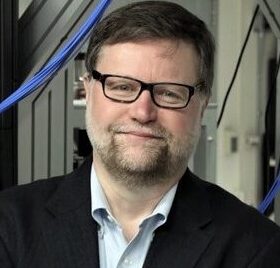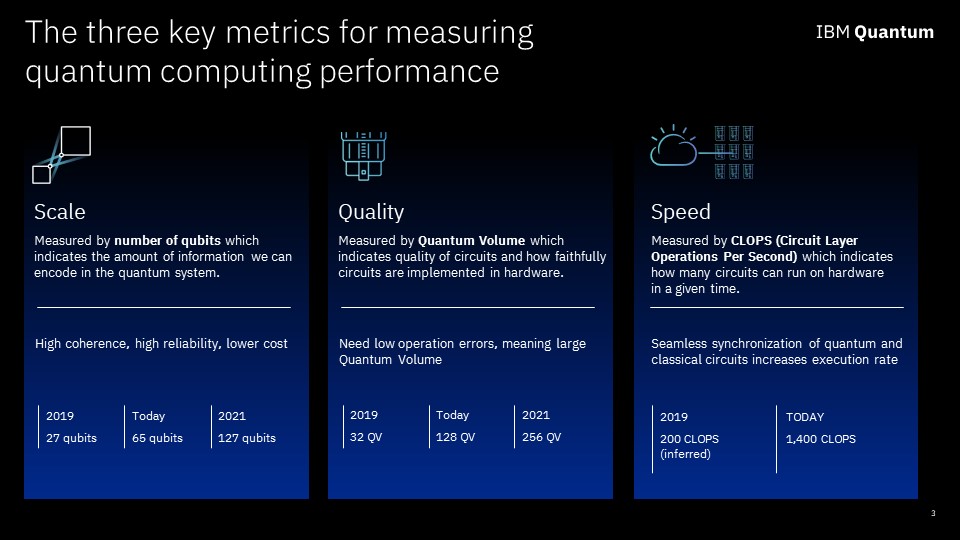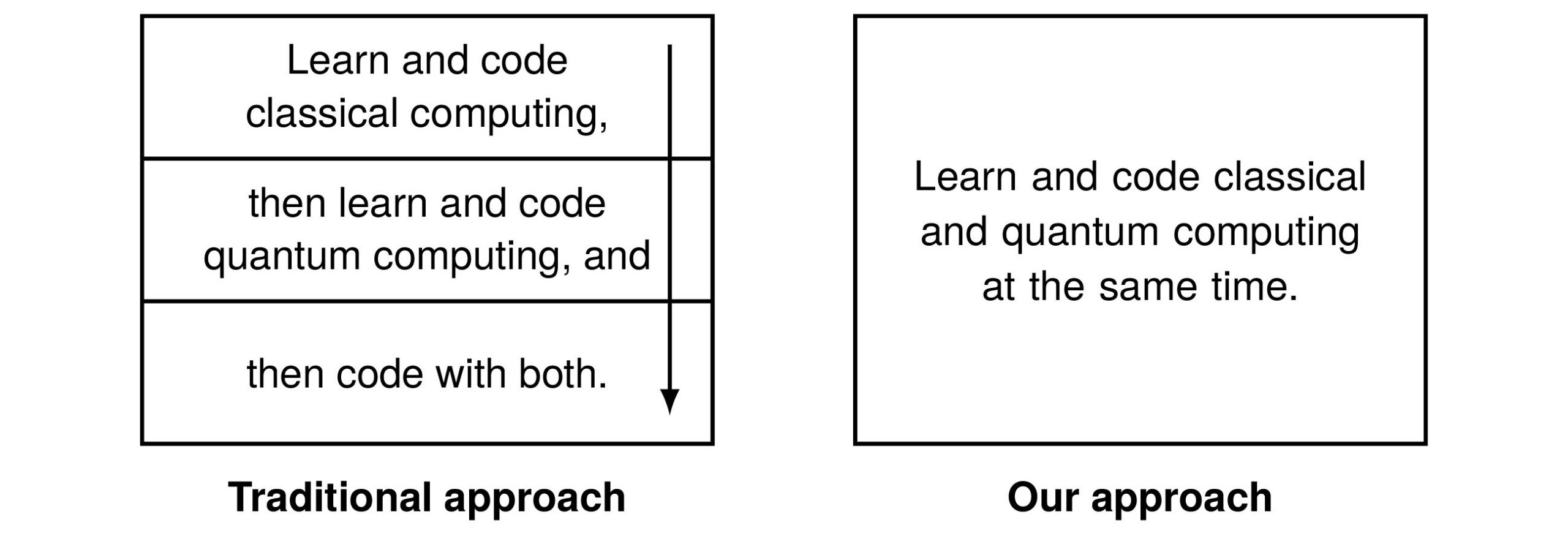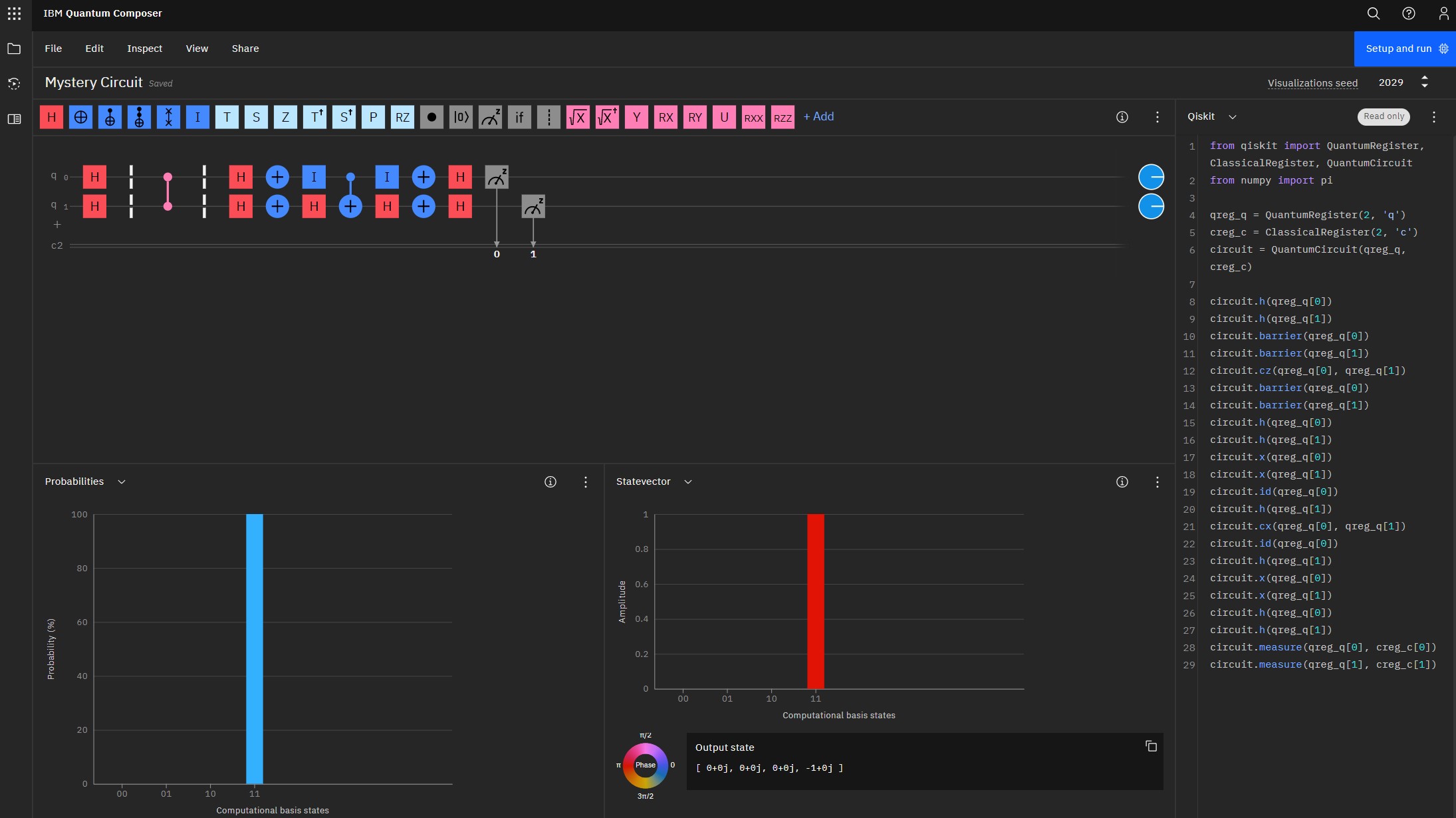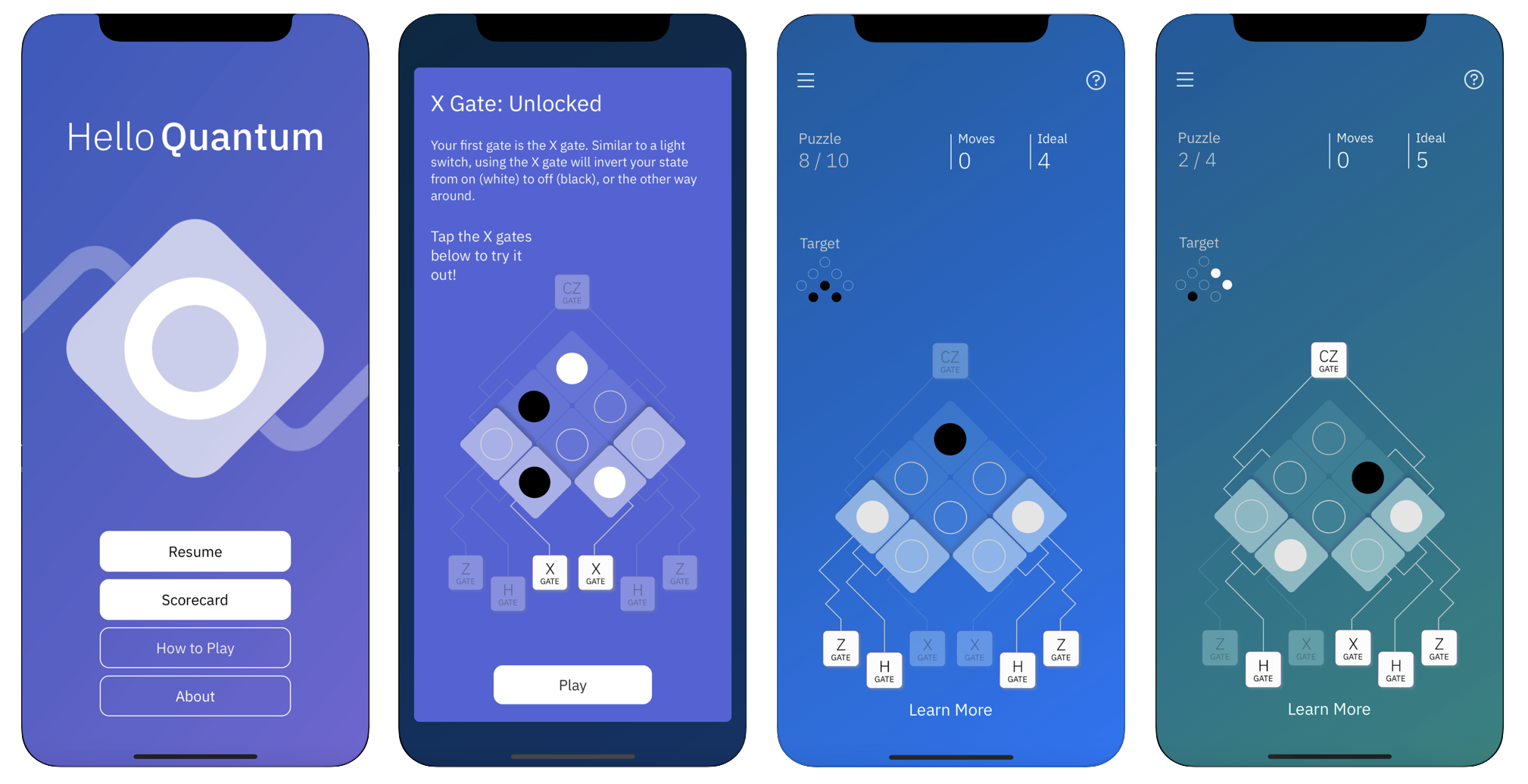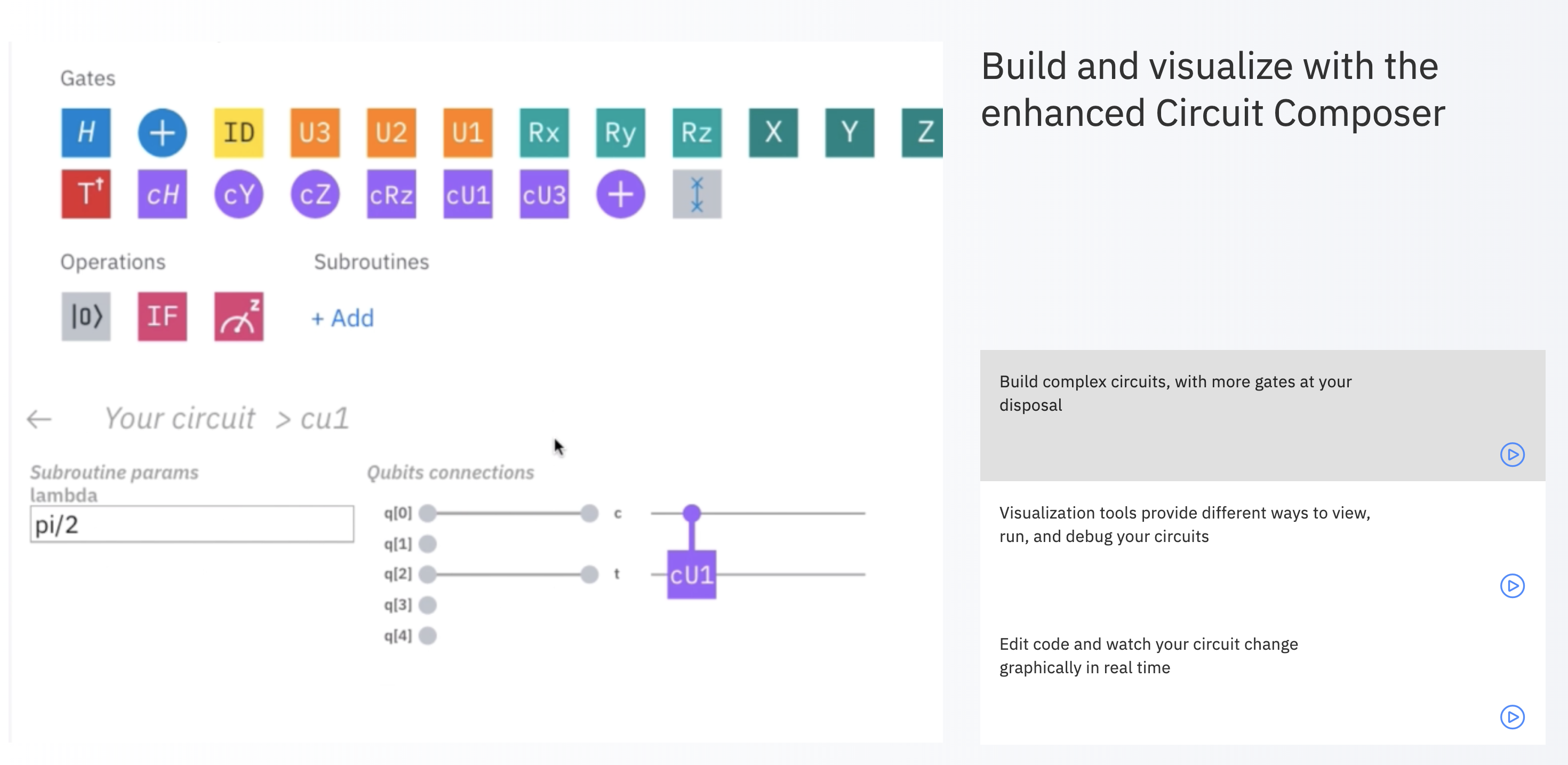A selection of the most important recent news, articles, and papers about AI.
News, Articles, and Analyses
IBM text-to-SQL generator tops leaderboard – IBM Research
(Tuesday, July 02, 2024) “IBM’s generative AI solution takes a top spot on the BIRD benchmark for handling complex database queries”
Reaffirming IBM’s commitment to the Rome Call for AI ethics – IBM Research
(Monday, July 15, 2024) “IBM joined representatives from many of the world’s major religions in Japan to discuss ethical AI development.”
AMD takes a deep dive into architecture for the AI PC chips | VentureBeat
Author: Dean Takahashi
(Monday, July 15, 2024) “Join our daily and weekly newsletters for the latest updates and exclusive content on industry-leading AI coverage. Learn More Advanced Micro Devices executives revealed the details of the chipmaker’s latest AI PC architecture, which includes a new neural processing unit (NPU) in the company’s latest AMD Ryzen AI chips. The company announced the latest AMD Ryzen […]”
MathΣtral | Mistral AI | Frontier AI in your hands
(Tuesday, July 16, 2024) “As a tribute to Archimedes, whose 2311th anniversary we’re celebrating this year, we are proud to release our first Mathstral model, a specific 7B model designed for math reasoning and scientific discovery. The model has a 32k context window published under the Apache 2.0 license.”
AI in gaming: Developers worried by generative tech
“In a struggling games industry AI has been hailed as a possible saviour. But not everyone’s convinced.”
Technical Papers and Preprints
[2407.12690] The Dual Imperative: Innovation and Regulation in the AI Era
Author: Carvão, Paulo
 (Thursday, May 23, 2024) “This article addresses the societal costs associated with the lack of regulation in Artificial Intelligence and proposes a framework combining innovation and regulation. Over fifty years of AI research, catalyzed by declining computing costs and the proliferation of data, have propelled AI into the mainstream, promising significant economic benefits. Yet, this rapid adoption underscores risks, from bias amplification and labor disruptions to existential threats posed by autonomous systems. The discourse is polarized between accelerationists, advocating for unfettered technological advancement, and doomers, calling for a slowdown to prevent dystopian outcomes. This piece advocates for a middle path that leverages technical innovation and smart regulation to maximize the benefits of AI while minimizing its risks, offering a pragmatic approach to the responsible progress of AI technology. Technical invention beyond the most capable foundation models is needed to contain catastrophic risks. Regulation is required to create incentives for this research while addressing current issues.”
(Thursday, May 23, 2024) “This article addresses the societal costs associated with the lack of regulation in Artificial Intelligence and proposes a framework combining innovation and regulation. Over fifty years of AI research, catalyzed by declining computing costs and the proliferation of data, have propelled AI into the mainstream, promising significant economic benefits. Yet, this rapid adoption underscores risks, from bias amplification and labor disruptions to existential threats posed by autonomous systems. The discourse is polarized between accelerationists, advocating for unfettered technological advancement, and doomers, calling for a slowdown to prevent dystopian outcomes. This piece advocates for a middle path that leverages technical innovation and smart regulation to maximize the benefits of AI while minimizing its risks, offering a pragmatic approach to the responsible progress of AI technology. Technical invention beyond the most capable foundation models is needed to contain catastrophic risks. Regulation is required to create incentives for this research while addressing current issues.”
[2407.12043] The Art of Saying No: Contextual Noncompliance in Language Models
Authors: Brahman, Faeze; Kumar, Sachin; Balachandran, Vidhisha; Dasigi, Pradeep; Pyatkin, Valentina; Ravichander, Abhilasha; Wiegreffe, Sarah; Dziri, Nouha; Chandu, Khyathi; Hessel, Jack; Tsvetkov, Yulia; Smith, Noah A.; Choi, Yejin; Hajishirzi, Hannaneh
 (Tuesday, July 02, 2024) “Chat-based language models are designed to be helpful, yet they should not comply with every user request. While most existing work primarily focuses on refusal of “unsafe” queries, we posit that the scope of noncompliance should be broadened. We introduce a comprehensive taxonomy of contextual noncompliance describing when and how models should not comply with user requests. Our taxonomy spans a wide range of categories including incomplete, unsupported, indeterminate, and humanizing requests (in addition to unsafe requests). To test noncompliance capabilities of language models, we use this taxonomy to develop a new evaluation suite of 1000 noncompliance prompts. We find that most existing models show significantly high compliance rates in certain previously understudied categories with models like GPT-4 incorrectly complying with as many as 30% of requests. To address these gaps, we explore different training strategies using a synthetically-generated training set of requests and expected noncompliant responses. Our experiments demonstrate that while direct finetuning of instruction-tuned models can lead to both over-refusal and a decline in general capabilities, using parameter efficient methods like low rank adapters helps to strike a good balance between appropriate noncompliance and other capabilities.”
(Tuesday, July 02, 2024) “Chat-based language models are designed to be helpful, yet they should not comply with every user request. While most existing work primarily focuses on refusal of “unsafe” queries, we posit that the scope of noncompliance should be broadened. We introduce a comprehensive taxonomy of contextual noncompliance describing when and how models should not comply with user requests. Our taxonomy spans a wide range of categories including incomplete, unsupported, indeterminate, and humanizing requests (in addition to unsafe requests). To test noncompliance capabilities of language models, we use this taxonomy to develop a new evaluation suite of 1000 noncompliance prompts. We find that most existing models show significantly high compliance rates in certain previously understudied categories with models like GPT-4 incorrectly complying with as many as 30% of requests. To address these gaps, we explore different training strategies using a synthetically-generated training set of requests and expected noncompliant responses. Our experiments demonstrate that while direct finetuning of instruction-tuned models can lead to both over-refusal and a decline in general capabilities, using parameter efficient methods like low rank adapters helps to strike a good balance between appropriate noncompliance and other capabilities.”
Share this:
Notable and Interesting Recent AI News, Articles, and Papers for Monday, July 15, 2024
A selection of the most important recent news, articles, and papers about AI.
News, Articles, and Analyses
Developers get by with a little help from AI: Stack Overflow Knows code assistant pulse survey results – Stack Overflow
Gen AI and beyond: Where else to focus now | McKinsey
(Friday, July 12, 2024) “Yes, gen AI can be dazzling. But to deliver value, leaders will have to look beyond center stage.”
Designing for Education with Artificial Intelligence: An Essential Guide for Developers – Office of Educational Technology
“Informing product leads and their teams of innovators, designers, and developers as they work toward safety, security, and trust while creating AI products and services for use in education.”
IBM’s AI, Open-Source Granite Models & Sports Technology – The Futurum Group
Author: Steven Dickens
“Chief Technology Advisor Steven Dickens shares insights on how IBM uses AI to enhance sports, democratizing innovation through open-source.”
Technical Papers and Preprints
[2407.08488] Lynx: An Open Source Hallucination Evaluation Model
Authors: Ravi, Selvan Sunitha; Mielczarek, Bartosz; Kannappan, Anand; Kiela, Douwe; Qian, Rebecca
 (Thursday, July 11, 2024) “Retrieval Augmented Generation (RAG) techniques aim to mitigate hallucinations in Large Language Models (LLMs). However, LLMs can still produce information that is unsupported or contradictory to the retrieved contexts. We introduce LYNX, a SOTA hallucination detection LLM that is capable of advanced reasoning on challenging real-world hallucination scenarios. To evaluate LYNX, we present HaluBench, a comprehensive hallucination evaluation benchmark, consisting of 15k samples sourced from various real-world domains. Our experiment results show that LYNX outperforms GPT-4o, Claude-3-Sonnet, and closed and open-source LLM-as-a-judge models on HaluBench. We release LYNX, HaluBench and our evaluation code for public access.”
(Thursday, July 11, 2024) “Retrieval Augmented Generation (RAG) techniques aim to mitigate hallucinations in Large Language Models (LLMs). However, LLMs can still produce information that is unsupported or contradictory to the retrieved contexts. We introduce LYNX, a SOTA hallucination detection LLM that is capable of advanced reasoning on challenging real-world hallucination scenarios. To evaluate LYNX, we present HaluBench, a comprehensive hallucination evaluation benchmark, consisting of 15k samples sourced from various real-world domains. Our experiment results show that LYNX outperforms GPT-4o, Claude-3-Sonnet, and closed and open-source LLM-as-a-judge models on HaluBench. We release LYNX, HaluBench and our evaluation code for public access.”
[2407.08105] Federated Learning and AI Regulation in the European Union: Who is Responsible? — An Interdisciplinary Analysis
Authors: Woisetschläger, Herbert; Mertel, Simon; Krönke, Christoph; Mayer, Ruben; Jacobsen, Hans-Arno
 (Thursday, July 11, 2024) “The European Union Artificial Intelligence Act mandates clear stakeholder responsibilities in developing and deploying machine learning applications to avoid substantial fines, prioritizing private and secure data processing with data remaining at its origin. Federated Learning (FL) enables the training of generative AI Models across data siloes, sharing only model parameters while improving data security. Since FL is a cooperative learning paradigm, clients and servers naturally share legal responsibility in the FL pipeline. Our work contributes to clarifying the roles of both parties, explains strategies for shifting responsibilities to the server operator, and points out open technical challenges that we must solve to improve FL’s practical applicability under the EU AI Act.”
(Thursday, July 11, 2024) “The European Union Artificial Intelligence Act mandates clear stakeholder responsibilities in developing and deploying machine learning applications to avoid substantial fines, prioritizing private and secure data processing with data remaining at its origin. Federated Learning (FL) enables the training of generative AI Models across data siloes, sharing only model parameters while improving data security. Since FL is a cooperative learning paradigm, clients and servers naturally share legal responsibility in the FL pipeline. Our work contributes to clarifying the roles of both parties, explains strategies for shifting responsibilities to the server operator, and points out open technical challenges that we must solve to improve FL’s practical applicability under the EU AI Act.”
Share this:
Notable Recent Quantum News, Articles, and Papers for Thursday, July 11, 2024
A selection of the most important recent news and articles about #quantumcomputing.
Fourier Quantum Process Tomography | npj Quantum Information
(Thursday, May 09, 2024) “The characterization of a quantum device is a crucial step in the development of quantum experiments. This is accomplished via Quantum Process Tomography, which combines the outcomes of different projective measurements to deliver a possible reconstruction of the underlying process. The tomography is typically performed by processing an overcomplete set of measurements and extracting the process matrix from maximum-likelihood estimation. Here, we introduce Fourier Quantum Process Tomography, a technique which requires a reduced number of measurements, and benchmark its performance against the standard maximum-likelihood approach. Fourier Quantum Process Tomography is based on measuring probability distributions in two conjugate spaces for different state preparations and projections. Exploiting the concept of phase retrieval, our scheme achieves a complete and robust characterization of the setup by processing a near-minimal set of measurements. We experimentally test the technique on different space-dependent polarization transformations, reporting average fidelities higher than 90% and significant computational advantage.”
Enabling Quantum Computing with AI | NVIDIA Technical Blog
(Sunday, May 12, 2024) “Building a useful quantum computer in practice is incredibly challenging. Significant improvements are needed in the scale, fidelity, speed, reliability, and programmability of quantum computers to…”
Kipu Quantum Acquires Quantum Computing Platform Built by Anaqor AG to Accelerate Development of Industrially Relevant Quantum Solutions
(Thursday, July 11, 2024) “/PRNewswire/ — Kipu Quantum, the worldwide leading quantum software company, announced today the strategic acquisition of PlanQK, the German quantum computing…”
Simulating the universe’s most extreme environments | IBM Quantum Computing Blog
“Scalable techniques for quantum simulations of high-energy physics.”
Quantum in Context: Quantum Companies Rotate in New Leaders – The Futurum Group
“Learn which quantum computing companies have recently replaced their CEOs & reasons Boards of Directors make such changes.”
EDF, Alice & Bob, Quandela and CNRS Partner to Optimize Quantum Computing’s Energy Efficiency
“PARIS, July 10, 2024 — French electric utility company EDF, in collaboration with quantum computing firms Quandela and Alice & Bob, and the French National Centre for Scientific Research (CNRS), has […]”
Study of Quantum Computing Energy Efficiency – The Futurum Group
“Learn about a study in France that will look at the energy efficiency of quantum computing systems versus HPC for well-known algorithms.”
Oxford Ionics breaks global quantum performance records
“Oxford Ionics has demonstrated the highest performing quantum chip in the world, which can be produced at scale in a standard semiconductor fabrication plant.”
Share this:
Notable and Interesting Recent AI News, Articles, and Papers for Tuesday, July 9, 2024
Unleash developer productivity with generative AI | McKinsey
(Tuesday, June 27, 2023) “A new McKinsey study shows that software developers can complete tasks up to twice as fast with generative AI. Four actions can help maximize productivity.”
IBM Makes Generative AI Platform for DevOps Available – DevOps.com
(Tuesday, July 02, 2024) “IBM has made available IBM Concert, leveraging generative artificial intelligence and knowledge graphs to surface in real-time dependencies.”
Maintaining human oversight in AI-enhanced software development – Help Net Security
(Wednesday, July 03, 2024) “It’s not that AI-generated code introduces new security gaps; it just means that even more code will make its way through existing gaps.”
Transparency From Behind the Generative AI Curtain – The New Stack
(Friday, July 05, 2024) “The Foundational Model Transparency Index illuminates the black box of data on which large language models are trained.”
Nintendo Says Generative AI Can Be Used in ‘Creative Ways,’ but Highlights IP Issues – IGN
(Friday, July 05, 2024) “Nintendo has commented on the controversial topic of generative AI in video game development, outline the pros and cons as it sees them.”
Enterprises must stop GenAI experiments and start long-term strategies | Computer Weekly
“Steven Webb, chief technology & innovation officer, Capgemini UK argues for enterprise organisations to put aside GenAI experimentation and build long-term strategies with it.”
Gen AI and software development | Deloitte Insights
“Freeplay CEO Ian Cairns describes how the organization has adapted to the paradigm shift that generative AI demands while building AI applications”
Zapata AI and D-Wave Quantum Announce Expanded Partnership for Advanced Generative AI Solutions
“BOSTON and PALO ALTO, Calif., July 8, 2024 — Zapata Computing Holdings Inc., a leader in Industrial Generative AI software solutions, and D-Wave Quantum Inc., a leader in quantum computing […]”
Share this:
Quick update
Since I last posted, I left IBM after 39 years and joined ColdQuanta, a quantum sensing, computing, and manufacturing company based in Boulder, CO USA.
My initial role was Vice President of Corporate Development, but with the influx of extraordinary leaders on the business side, I shifted to Vice President and Chief Quantum Advocate in October 2022.
I’m fairly active on LinkedIn but less so on Twitter. Now that travel has resumed, I’ve been speaking at quantum conferences and doing media interviews.
Share this:
I leave IBM after 39 years
Because one is allowed to …
Share this:
From classical FLOPS to quantum CLOPS
This week IBM Quantum introduced a new quantum computing architecture-neutral performance speed metric called CLOPS. CLOPS is short for “Circuit Layer Operations per Second.” For those of you familiar with measuring the speed of high performance classical computers, the acronym is a nod to the metric FLOPS, or “Floating point Operations per Second.”
CLOPS joins Quantum Volume (a measurement of quantum circuit execution quality) and Number of Qubits (an indication of the size of the problem your system can handle) as one of the three essential ways that we can measure progress toward practical Quantum Advantage. Quantum Advantage signifies the point where quantum computers together with classical computing systems can do better than the classical systems alone.
Resources and articles to learn more about CLOPS and quantum computing metrics
The IBM Research Blog: Driving quantum performance: more qubits, higher Quantum Volume, and now a proper measure of speed
The technical white paper on arxiv: Scale, Quality, and Speed: three key attributes to measure the performance of near-term quantum computers
IBM Quantum head Jay Gambetta’s YouTube video: Three Metrics for Quantum Computing Performance: Scale, Quality and Speed
My Inside Quantum Technology conference keynote on November 1, 2021:
- IQT Fall: Sutor, Gasman say quantum needs to focus on what’s practical to achieve what’s possible – Inside Quantum Technology
- Fierce Electronics: IBM proposes new quantum computing speed metric: CLOPS
ZDNet article: Quantum computing: IBM just created this new way to measure the speed of quantum processors
DevClass article: Horses for courses: IBM trots out CLOPS as measure of quantum performance
Share this:
Quantum computing in my book Dancing with Python
My new book, Dancing with Python: Learn Python software development from scratch and get started with quantum computing, is now available from Amazon and other sources, and I recently posted the full table of contents. Though it is an introduction to Python, albeit with discussions of several advanced modules, it provides a unified approach with quantum computing.
My approach is described in the Preface:
How do you learn to code in this new world that involves both classical and quantum hardware?
One way to do it is to learn classical computing by itself. This is the traditional way of doing it, using a language such as C, C++, JavaScript, Java, Go, or Python. Along the way, you would learn how to use extra functionality in libraries of code along with the programming tools or from a third-party provider. Examples of these are the C++ Standard Library; the Java Platform, Enterprise Edition; the Python Standard Library; or the thousands of Python packages listed in the Python Package Index.
Once you have the philosophy, syntax, structure, and idioms of the classical programming language understood, you then learn quantum computing on top of that. For example, you could use the Qiskit open source quantum computing software development kit (SDK) along with Python. These mesh together and operate exceptionally well. Thousands of people are already Qiskit coders. If you know Python, this is a great approach.
But what if you are learning to code or have only a small amount of experience? What if I could offer you the chance to learn classical and quantum computing in a unified manner? Would it be useful if I could help you understand the concepts of both so that you don’t see them as different disciplines? That’s what I do in this book.
I talk about aspects of quantum computing throughout the book and in many places I provide pointers to sections in my quantum computing book Dancing with Qubits. That book is not a prerequisite for Dancing with Python, but the referenced sections will help you learn more about the topics if you wish to go deeper.
I first talk about qubits, “quantum bits”, in section 1.11. The main chapters that discuss quantum computing are 9 and 11:
9 Understanding Gates and Circuits
Classical computers use logical gates to manipulate bits. Using them, we assemble circuits to implement more complicated processes like addition and multiplication. Eventually, we get all the software that runs on computers everywhere.
Quantum computers use qubits to significantly extend the power of bits, as we saw in section 1.11. We assemble these into quantum circuits to implement algorithms.
There is a strong connection between classical and quantum computing, and a quantum computing system is a classical computing system extended with one or more quantum devices. These devices are the physical implementations of qubits and the software and hardware that control them.
This chapter examines bits and qubits, gates that operate upon them, and how we assemble them into circuits.
9.1 The software stack
9.2 Boolean operations and bit logic gates
9.3 Logic circuits
9.4 Simplifying bit expressions
9.5 Universality for bit gates
9.6 Quantum gates and operations
9.7 Quantum circuits
9.8 Universality for quantum gates
9.9 Summary
11 Searching for the Quantum Improvement
By considering new approaches and getting clever, we can develop classical algorithms that are faster than you might have expected. Using quantum techniques, we can go a step further: perform some operations faster than seems possible.
This chapter compares classical and quantum search techniques to see how extending our basic information unit from the bit to the qubit can show remarkable improvements. Note that I only discuss mainstream “universal” quantum computing and not limited-purpose systems that perform operations like simulated annealing.
11.1 Classical searching
11.2 Quantum searching via Grover
11.3 Oracles
11.4 Inversion about the mean
11.5 Amplitude amplification
11.6 Searching over two qubits
11.7 Summary
If you wish to learn more about quantum computing after reading this book, I suggest you look at
- my Dancing with Qubits book
- Robert Loredo’s Learn Quantum Computing with Python and IBM Quantum Experience: A hands-on introduction to quantum computing and writing your own quantum programs with Python
- the online Qiskit Textbook
Share this:
Availability of my book Dancing with Python and its table of contents
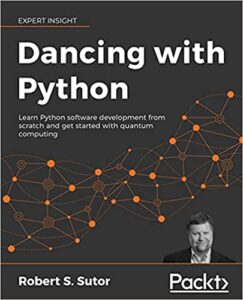
My new book Dancing with Python: Learn Python software development from scratch and get started with quantum computing is now available for purchase from Amazon and Packt Publishing.
Develop skills in Python by implementing exciting algorithms, including mathematical functions, classical searching, data analysis, plotting data, machine learning techniques, and quantum circuits.
Key Features
Learn Python basics to write elegant and efficient code
Create quantum circuits and algorithms using Qiskit and run them on quantum computing hardware and simulators
Delve into Python’s advanced features, including machine learning, analyzing data, and searching
Contributors
About the author
About the reviewer
Contents
List of Figures
Preface
Why did I write this book?
For whom did I write this book?
What does this book cover?
What conventions do I use in this book?
Get in touch
1 Doing the Things That Coders Do
1.1 Data
1.2 Expressions
1.3 Functions
1.4 Libraries
1.5 Collections
1.6 Conditional processing
1.7 Loops
1.8 Exceptions
1.9 Records
10 Contents
1.10 Objects and classes
1.11 Qubits
1.12 Circuits
1.13 Summary
I Getting to Know Python
2 Working with Expressions
2.1 Numbers
2.2 Strings
2.3 Lists
2.4 Variables and assignment
2.5 True and False
2.6 Arithmetic
2.7 String operations
2.8 List operations
2.9 Printing
2.10 Conditionals
2.11 Loops
2.12 Functions
2.13 Summary
3 Collecting Things Together
3.1 The big three
3.2 Lists
3.3 The joy of O(1)
3.4 Tuples
3.5 Comprehensions
3.6 What does “Pythonic” mean?
3.7 Nested comprehensions
3.8 Parallel traverse
3.9 Dictionaries
3.10 Sets
3.11 Summary
4 Stringing You Along
4.1 Single, double, and triple quotes
4.2 Testing for substrings
4.3 Accessing characters
4.4 Creating strings
4.5 Strings and iterations
4.6 Strings and slicing
4.7 String tests
4.8 Splitting and stripping
4.9 Summary
5 Computing and Calculating
5.1 Using Python modules
5.2 Integers
5.3 Floating-point numbers
5.4 Rational numbers
5.5 Complex numbers
5.6 Symbolic computation
5.7 Random numbers
5.8 Quantum randomness
5.9 Summary
6 Defining and Using Functions
6.1 The basic form
6.2 Parameters and arguments
6.3 Naming conventions
6.4 Return values
6.5 Keyword arguments
6.6 Default argument values
6.7 Formatting conventions
6.8 Nested functions
6.9 Variable scope
6.10 Functions are objects
6.11 Anonymous functions
6.12 Recursion
6.13 Summary
7 Organizing Objects into Classes
7.1 Objects
7.2 Classes, methods, and variables
7.3 Object representation
7.4 Magic methods
7.5 Attributes and properties
7.6 Naming conventions and encapsulation
7.7 Commenting Python code
7.8 Documenting Python code
7.9 Enumerations
7.10 More polynomial magic
7.11 Class variables
7.12 Class and static methods
7.13 Inheritance
7.14 Iterators
7.15 Generators
7.16 Objects in collections
7.17 Creating modules
7.18 Summary
8 Working with Files
8.1 Paths and the file system
8.2 Moving around the file system
8.3 Creating and removing directories
8.4 Lists of files and folders
8.5 Names and locations
8.6 Types of files
8.7 Reading and writing files
8.8 Saving and restoring data
8.9 Summary
II Algorithms and Circuits
9 Understanding Gates and Circuits
9.1 The software stack
9.2 Boolean operations and bit logic gates
9.3 Logic circuits
9.4 Simplifying bit expressions
9.5 Universality for bit gates
9.6 Quantum gates and operations
9.7 Quantum circuits
9.8 Universality for quantum gates
9.9 Summary
10 Optimizing and Testing Your Code
10.1 Testing your code
10.2 Timing how long your code takes to run
10.3 Optimizing your code
10.4 Looking for orphan code
10.5 Defining and using decorators
10.6 Summary
11 Searching for the Quantum Improvement
11.1 Classical searching
11.2 Quantum searching via Grover
11.3 Oracles
11.4 Inversion about the mean
11.5 Amplitude amplification
11.6 Searching over two qubits
11.7 Summary
III Advanced Features and Libraries
12 Searching and Changing Text
12.1 Core string search and replace methods
12.2 Regular expressions
12.3 Introduction to Natural Language Processing
12.4 Summary
13 Creating Plots and Charts
13.1 Function plots
13.2 Bar charts
13.3 Histograms
13.4 Pie charts
13.5 Scatter plots
13.6 Moving to three dimensions
13.7 Summary
14 Analyzing Data
14.1 Statistics
14.2 Cats and commas
14.3 pandas DataFrames
14.4 Data cleaning
14.5 Statistics with pandas
14.6 Converting categorical data
14.7 Cats by gender in each locality
14.8 Are all tortoiseshell cats female?
14.9 Cats in trees and circles
14.10 Summary
15 Learning, Briefly
15.1 What is machine learning?
15.2 Cats again
15.3 Feature scaling
15.4 Feature selection and reduction
15.5 Clustering
15.6 Classification
15.7 Linear regression
15.8 Concepts of neural networks
15.9 Quantum machine learning
15.10 Summary
Appendices
A Tools
A.1 The operating system command line
A.2 Installing Python
A.3 Installing Python modules and packages
A.4 Installing a virtual environment
A.5 Installing the Python packages used in this book
A.6 The Python interpreter
A.7 IDLE
A.8 Visual Studio Code
A.9 Jupyter notebooks
A.10 Installing and setting up Qiskit
A.11 The IBM Quantum Composer and Lab
A.12 Linting
B Staying Current
B.1 python.org
B.2 qiskit.org
B.3 Python expert sites
B.4 Asking questions and getting answers
C The Complete UniPoly Class
D The Complete Guitar Class Hierarchy
E Notices
E.1 Photos, images, and diagrams
E.2 Data
E.3 Trademarks
E.4 Python 3 license
F Production Notes
References
Other Books You May Enjoy
Index
Index Formatting Examples
Python function, method, and property index
Python class index
Python module and package index
General index
Share this:
A #QuantumComputing mini-quiz for 2021-04-11
What Quantum Computing circuit is this in the IBM Quantum Composer?
What is it doing? Name the parts.
I think the Composer is extraordinarily elegant.
Share this:
Photo: Close-up of an IBM Quantum cryostat
Share this:
IBM Quantum Composer and Lab – New tools to use now
The IBM Quantum Experience is now two tools: the IBM Quantum Composer and the IBM Quantum Lab. In the first, you can create circuits by drag and drop, run them on a range of hardware and simulators backends, and visualize the results in several ways.
The IBM Quantum Lab is Jupyter-based and gives you the full power of that environment, plus the Qiskit open-source quantum software development kit.
You can use both at no charge with several real quantum computers, or access the advanced quantum systems if you have license to them within the IBM Quantum Network. Several new simulators are available in addition to qasm_simulator.
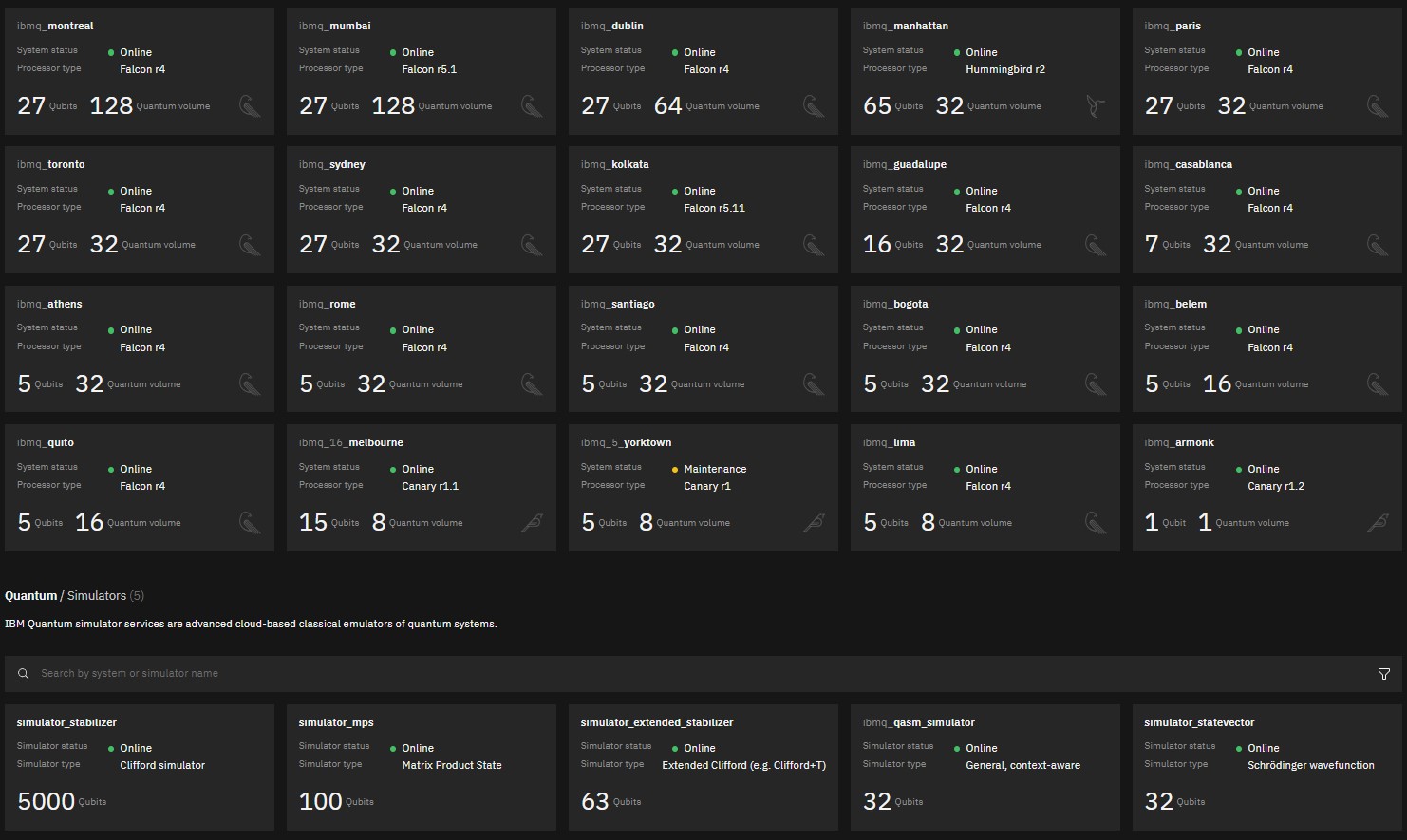
Share this:
Video of my Q-munity Tech Workshop talk: Quantum Computing – The Next Five Years
My Q-munity Tech Workshop talk from February 25th is now on YouTube. The abstract for the talk was:
There’s a lot of work to be done before quantum computing can reach the scale and performance it must reach to be part of production workloads. In this talk, I’ll describe the IBM Quantum roadmap for the next five years and argue that it is really an industry execution plan for all of us.
Share this:
Call for papers: Education, Research, and Application of Quantum Computing – HICSS 2022

My IBM Quantum colleague Dr. Andrew Wack and I are hosting a minitrack at the Hawaii International Conference on System Sciences (HICSS) 2022.
The description of the minitrack is:
There is no question that quantum computing will be a technology that will spur breakthroughs in natural science, AI, and computational algorithms such as those used in finance. IBM, Google, Honeywell, and several startups are working hard to create the next generation of “supercomputers” based on universal quantum technology.
What exactly is quantum computing, how does it work, how do we teach it, how do we leverage it in education and research, and what will it take to achieve these quantum breakthroughs?
The purpose of this minitrack is to bring together educators and researchers who are working to bring quantum computing into the mainstream.
We are looking for reports that
- improve our understanding of how to integrate quantum computing into business, machine learning, computer science, and applied mathematics university curriculums,
- describe hands-on student experiences with the open-source Qiskit quantum software development kit, and
- extend computational techniques for business, finance, and economics from classical to quantum systems.
It is part of the Decision Analytics and Service Science track at HICSS.
Please consider submitting a report and sharing this Call for Papers with your colleagues.
Share this:
“How to use interference to your advantage – a quantum computing catch up”
My IBM Quantum colleague Blake Johnson and I had a great conversation with Ben Popper of StackOverflow about software and quantum computing.
Share this:
Introduction to Quantum Computing and Quantum Hardware
This online course is a great way to go deeply into what makes quantum computing work. Join thousands of your global colleagues and get hands-on knowledge about IBM Quantum and Qiskit.
Introduction to Quantum Computing and Quantum Hardware
Share this:
Dancing with Qubits: Quantum Computing and Finance update
In section 1.5 of my quantum computing book Dancing with Qubits, I discuss potential applications of the technology to financial services. An excellent survey article by my IBM Quantum colleagues is now on arXiv that updates and goes into much greater detail than what I covered.
“Quantum computing for Finance: state of the art and future prospects” by Daniel J. Egger, Claudio Gambella, Jakub Marecek, Scott McFaddin, Martin Mevissen, Rudy Raymond, Andrea Simonetto, Stefan Woerner, and Elena Yndurain has this abstract:
This paper outlines our point of view regarding the applicability, state of the art, and potential of quantum computing for problems in finance. We provide an introduction to quantum computing as well as a survey on problem classes in finance that are computationally challenging classically and for which quantum computing algorithms are promising. In the main part, we describe in detail quantum algorithms for specific applications arising in financial services, such as those involving simulation, optimization, and machine learning problems. In addition, we include demonstrations of quantum algorithms on IBM Quantum back-ends and discuss the potential benefits of quantum algorithms for problems in financial services. We conclude with a summary of technical challenges and future prospects.
I highly recommend it.
Share this:
IEEE Quantum Week and IBM Quantum

This year’s IEEE Quantum Week is planned for October 12-16, 2020, in Denver, Colorado.
IEEE Quantum Week is a multidisciplinary quantum computing venue where attendees will have the unique opportunity to discuss challenges and opportunities with quantum researchers, scientists, engineers, entrepreneurs, developers, students, practitioners, educators, programmers, and newcomers.
 The IBM Quantum team is well represented at the conference with a keynote from Jerry Chow. We also have 7 tutorials and 2 workshops.
The IBM Quantum team is well represented at the conference with a keynote from Jerry Chow. We also have 7 tutorials and 2 workshops.
Our tutorials are on the following topics:
- Quantum programming, an introduction
- Quantum machine learning for data scientists
- Quantum hardware control: a hands-on introduction
- Quantum algorithms for optimization
- Quantum algorithms for chemistry simulation
- Assessing the quality of qubits and quantum computers
- Serious Games for Quantum Computing
Our workshops are:
- Control and design of superconducting qubits
- Software for quantum applications, algorithms, and workflows
Registration is now open.
Share this:
Quantum computing article today in USA Today
USA Today published an article today called “Could quantum computing help beat the next coronavirus?” where they interviewed several of us in the IBM Quantum program. While the title is far-reaching, it refers to basic research today in how quantum computing might be used for calculations in the physical sciences and chemistry, in particular. It also mentions nascent financial services work via this quote from me:
For a consumer with a retirement fund, “quantum computers over the next 10 to 15 years … may help you make better personal financial decisions through the calculations that your broker is doing,” says Bob Sutor, an IBM Research vice president tasked with driving the quantum computing ecosystem.
Share this:
Some practical things you can do to learn about quantum computing
People often ask me “Where should I get started in order to learn about quantum computing?”. Here are several steps you can take. I work for IBM, so things I link to will often be to the IBM Quantum program. Also, I acknowledge that several of the links and videos toward the beginning involve me, but we’ll get through those quickly.
Watch some introductory videos
If you only watch one video, watch this one from WIRED with Talia Gershon:
This one with me is from early 2019 and discussed the IBM Q System One:
Finally, this video from CNBC with Professor Scott Aaronson of the University of Texas Austin, Martin Reynolds of Gartner, and me brings things up to date in January, 2020. Note that I personally do not support many of the statements about “Quantum Supremacy” (horrible label, supercomputers do have massive amounts of storage, off-by-15-million-percent math error):
Get a book
If you are really just getting started and want to systematically work through the required math at an easy and conversational pace, my book Dancing with Qubits should prepare you for more advanced material and give you a start to reading research papers. (Shameless self-plug.)
If you are a hard core physics and/or computer science person, you want to have Quantum Computation and Quantum Information: 10th Anniversary Edition 10th Anniversary ed. Edition by Michael A. Nielsen and Issac L. Chuang in your library. It’s a little old by now, but if you want to end up doing quantum computing research, you will likely have to become very familiar and comfortable with the contents. Other books to consider are Quantum Computing: A Gentle Introduction (good on algorithms, “gentle” is subjective!) and Quantum Computing for Computer Scientists (a bit dated and make sure you get a copy of the errata).
Play a game
Hello Quantum is available for Apple iOS and Android and will teach you the basics of how quantum gates and circuits work.
Build and run circuits with a real quantum computer
Quantum simulators have their place for basic education, experimentation, and debugging. Note, though, that a quantum simulator is to real quantum computer hardware as a TV console flight simulator is to a real plane. If you want a job as a pilot, I would prefer you knew how to fly an actual airplane.
The easiest way to get started without writing code is with the IBM Quantum Composer within the IBM Quantum Experience.
The IBM Quantum Experience has over 200,000 registered users, so you’ll be joining a very large community of beginner, intermediate, and advanced users.
Learn Python
If you are going to write quantum computing code, learn Python. As I write this, the latest version is 3.8. You want Python 3, not Python 2.
Learn Jupyter Notebooks
This is the modern way of developing full documents with interactive code, executions, graphics, videos, and visualizations. It’s used within the IBM Quantum Experience but also many other computational and AI applications. You are mainly interested in how to use it through a browser, not how to run and maintain the console.
Website (introductory): Introduction to Jupyter Notebooks
Write quantum computing code in Qiskit
Qiskit is the leading open source platform for developing quantum computing code and applications. It’s available on Github and available under the Apache 2,0 license. It’s had over 300,000 downloads but I’m recommending you use it through your browser on the IBM Cloud. As with the Composer, it is available through the IBM Quantum Experience.
Whether you want to download Qiskit or use it online, the easiest way to get get started is to watch the series of videos by Abe Asfaw.
From there, you can watch the other videos and also learn about the Qiskit Community.
At this point you are ready to work your way through the online open source Learn Quantum Computing through Qiskit.
